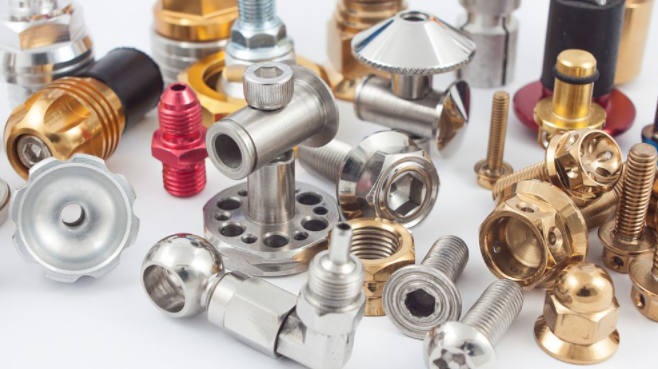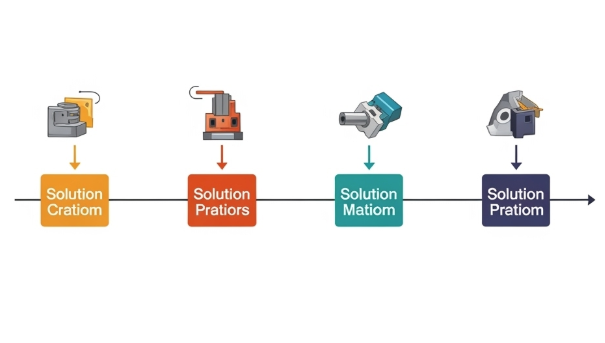Precision machining solutions are critical for manufacturing components with exact tolerances and complex geometries. This guide provides a detailed, technical exploration of precision machining processes, tools, materials, and applications, emphasizing systematic methodologies and specific parameters to achieve high-quality outcomes. Designed for professionals, this content focuses on the technical and operational aspects of precision machining without speculative trends or challenges.
Understanding Precision Machining
Precision machining is a subtractive manufacturing process that uses computer-controlled tools to remove material from a workpiece, achieving tight tolerances and high-quality surface finishes. It is essential in industries such as aerospace, medical devices, automotive, and electronics, where accuracy is paramount. The process relies on advanced machinery, such as Computer Numerical Control (CNC) systems, to produce parts with tolerances as tight as ±0.005 mm (0.0002 inches).
The core objective is to transform raw materials into finished components that meet stringent dimensional and surface quality specifications. This is achieved through a combination of sophisticated equipment, precise tooling, and meticulous process control. Unlike traditional machining, precision machining emphasizes repeatability and automation, ensuring consistent results across high-volume production runs.
Key Processes in Precision Machining
Precision machining encompasses several techniques, each tailored to specific applications and material types. Below is a detailed overview of the primary processes, including their operational parameters and applications.
CNC Milling
CNC milling involves the use of rotating cutting tools to remove material from a stationary workpiece. The process is highly versatile, capable of producing complex geometries, including slots, pockets, and contours. CNC milling machines operate along multiple axes (typically 3 to 5), with 5-axis systems offering enhanced flexibility for intricate parts.
Technical Parameters:
- Spindle Speed: 5,000–20,000 RPM, depending on material and tool type.
- Feed Rate: 50–500 mm/min, adjusted for material hardness and tool wear.
- Tolerance: ±0.01 mm for standard applications, ±0.002 mm for ultra-precision tasks.
- Tool Materials: Carbide, high-speed steel, or diamond-coated tools for hard materials.
CNC milling is widely used for producing aerospace components, such as turbine blades, and medical device parts, like surgical tool housings.
CNC Turning
CNC turning rotates the workpiece against a stationary cutting tool, ideal for creating cylindrical or conical shapes. The process is performed on CNC lathes, which can incorporate live tooling for additional operations like drilling or milling in a single setup.
Technical Parameters:
- Spindle Speed: 1,000–6,000 RPM, based on workpiece diameter and material.
- Feed Rate: 0.05–0.5 mm/rev, optimized for surface finish and tool life.
- Tolerance: ±0.005 mm for general applications, ±0.001 mm for high-precision tasks.
- Tool Materials: Carbide or ceramic inserts for metals, diamond for non-ferrous materials.
Applications include automotive shafts, pump housings, and precision fasteners.
Swiss Machining
Swiss machining, or Swiss turning, uses a sliding headstock and guide bushing to support the workpiece close to the cutting tool, minimizing deflection. This process excels in producing small, intricate parts with high precision.
Technical Parameters:
- Spindle Speed: 8,000–15,000 RPM for micro-scale components.
- Feed Rate: 0.02–0.2 mm/rev for delicate operations.
- Tolerance: ±0.002 mm for micro-components.
- Tool Materials: Micro-grain carbide for precision and durability.
Swiss machining is prevalent in medical device manufacturing, such as producing bone screws and dental implants.
Electrical Discharge Machining (EDM)
EDM uses electrical sparks to erode material from a conductive workpiece, enabling the machining of hard materials and complex shapes without physical cutting forces. It is ideal for intricate molds and dies.
Technical Parameters:
- Voltage: 50–300 V, depending on material conductivity.
- Pulse Duration: 2–200 µs for controlled material removal.
- Tolerance: ±0.001 mm for micro-machining applications.
- Electrode Materials: Copper or graphite for wire EDM, brass for sinker EDM.
EDM is used for producing aerospace tooling and micro-electronic components.
Materials in Precision Machining
The choice of material significantly impacts the machining process, tool selection, and final part performance. Precision machining accommodates a wide range of materials, each with specific properties that influence machinability and application.
| Material | Properties | Applications | Machinability Considerations |
|---|---|---|---|
| Aluminum | Lightweight, corrosion-resistant, high thermal conductivity | Aerospace frames, electronic housings | High-speed machining, low tool wear |
| Stainless Steel | High strength, corrosion-resistant | Medical implants, automotive components | Moderate tool wear, requires coolant |
| Titanium | High strength-to-weight ratio, biocompatible | Aerospace fasteners, medical prosthetics | High tool wear, low cutting speeds |
| PEEK (Polymer) | Chemical resistance, high temperature stability | Medical devices, electrical insulators | Low tool wear, precise temperature control |
Material selection depends on the part’s functional requirements, such as strength, weight, and environmental resistance. For instance, titanium is preferred in aerospace for its strength-to-weight ratio, while PEEK is chosen for medical applications due to its biocompatibility.
Precision Machining Workflow
The precision machining process follows a systematic workflow to ensure accuracy and efficiency. Each step is critical to achieving the desired outcome.
Design and Modeling
The process begins with creating a detailed 3D model using Computer-Aided Design (CAD) software. The model includes precise dimensions, tolerances, and material specifications. For example, a typical CAD model for a medical implant may specify a tolerance of ±0.002 mm and a surface roughness of Ra 0.1 µm.
CAM Programming
The CAD model is converted into a CNC-compatible format using Computer-Aided Manufacturing (CAM) software. This generates G-code and M-code instructions to control machine movements, tool paths, and auxiliary functions like coolant flow.
Machine Setup
Machine setup involves calibrating the CNC equipment, selecting appropriate tools, and securing the workpiece. Parameters such as spindle speed, feed rate, and coolant levels are configured based on material and design requirements.
Machining Execution
The CNC machine executes the programmed instructions, removing material with precision. Operators monitor the process via machine interfaces to ensure parameters remain within specified limits.
Quality Inspection
Finished parts undergo rigorous inspection using tools like coordinate measuring machines (CMM) and surface profilometers. For example, a CMM can measure dimensional accuracy to within ±0.001 mm, ensuring compliance with design specifications.
Applications of Precision Machining
Precision machining serves critical industries where accuracy and reliability are non-negotiable. Below are key applications with specific examples.
| Industry | Application | Example Component | Tolerance Requirement |
|---|---|---|---|
| Aerospace | Engine components | Turbine blades | ±0.01 mm |
| Medical | Surgical instruments | Bone screws | ±0.002 mm |
| Automotive | Transmission parts | Gears | ±0.005 mm |
| Electronics | Micro-components | Connectors | ±0.001 mm |
These applications highlight the versatility of precision machining in producing components that meet exacting standards across diverse sectors.
Quality Control in Precision Machining
Quality control is integral to precision machining, ensuring parts meet design specifications. Techniques include:
- Dimensional Inspection: Using CMMs to verify tolerances to ±0.001 mm.
- Surface Finish Analysis: Measuring roughness with profilometers, targeting Ra values below 0.1 µm.
- Material Testing: Conducting hardness and tensile tests to confirm material properties.
These measures ensure consistency and reliability, critical for high-stakes applications like aerospace and medical devices.

Conclusion
Precision machining solutions enable the production of high-accuracy components essential for modern industries. By leveraging advanced CNC technologies, precise tooling, and systematic workflows, manufacturers achieve tight tolerances and superior surface finishes. This guide has outlined the key processes, materials, workflows, applications, and quality control measures, providing a comprehensive resource for professionals seeking to understand and implement precision machining effectively.
